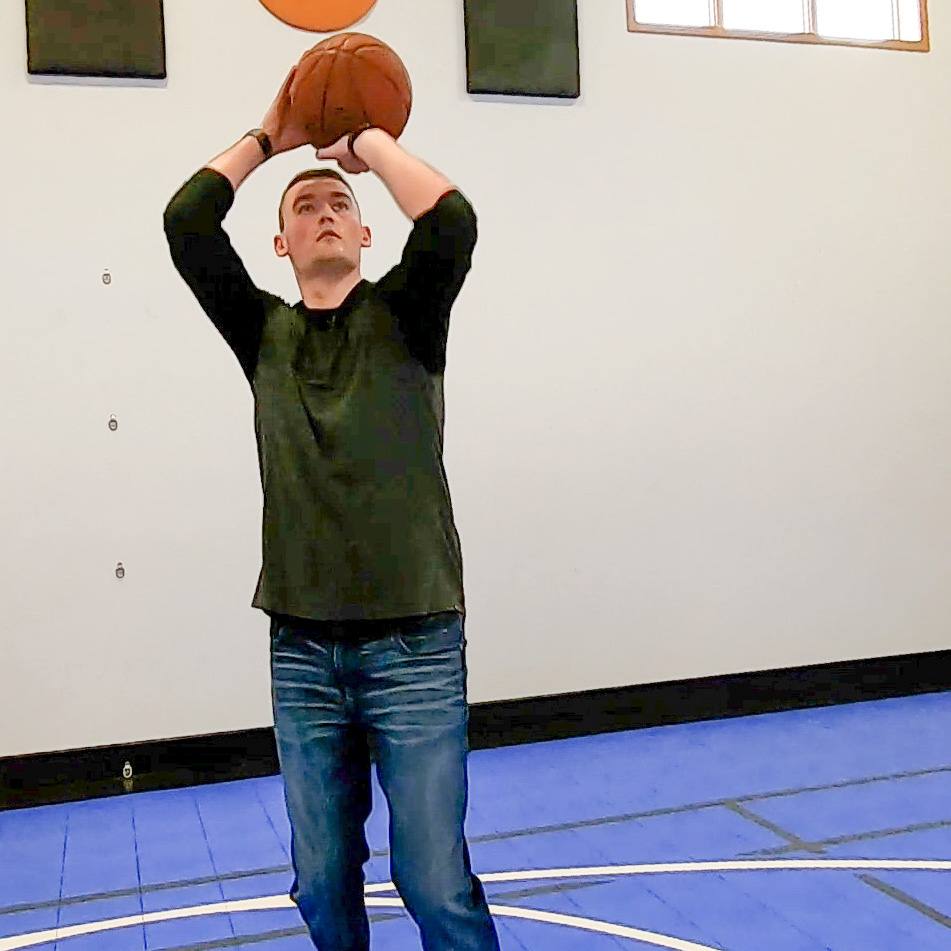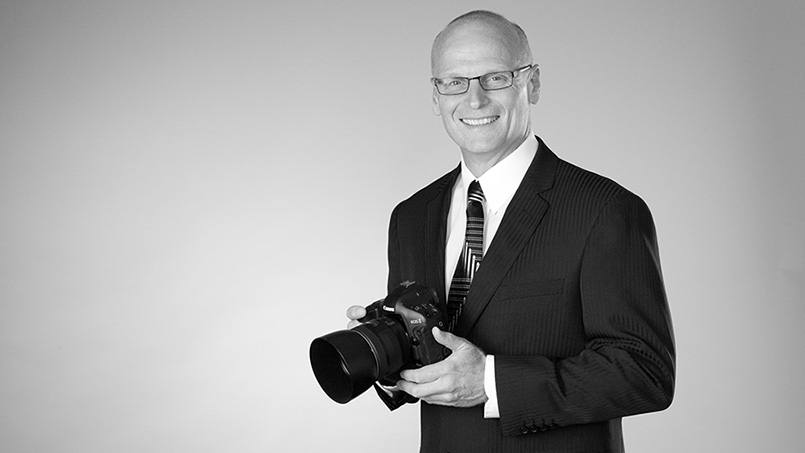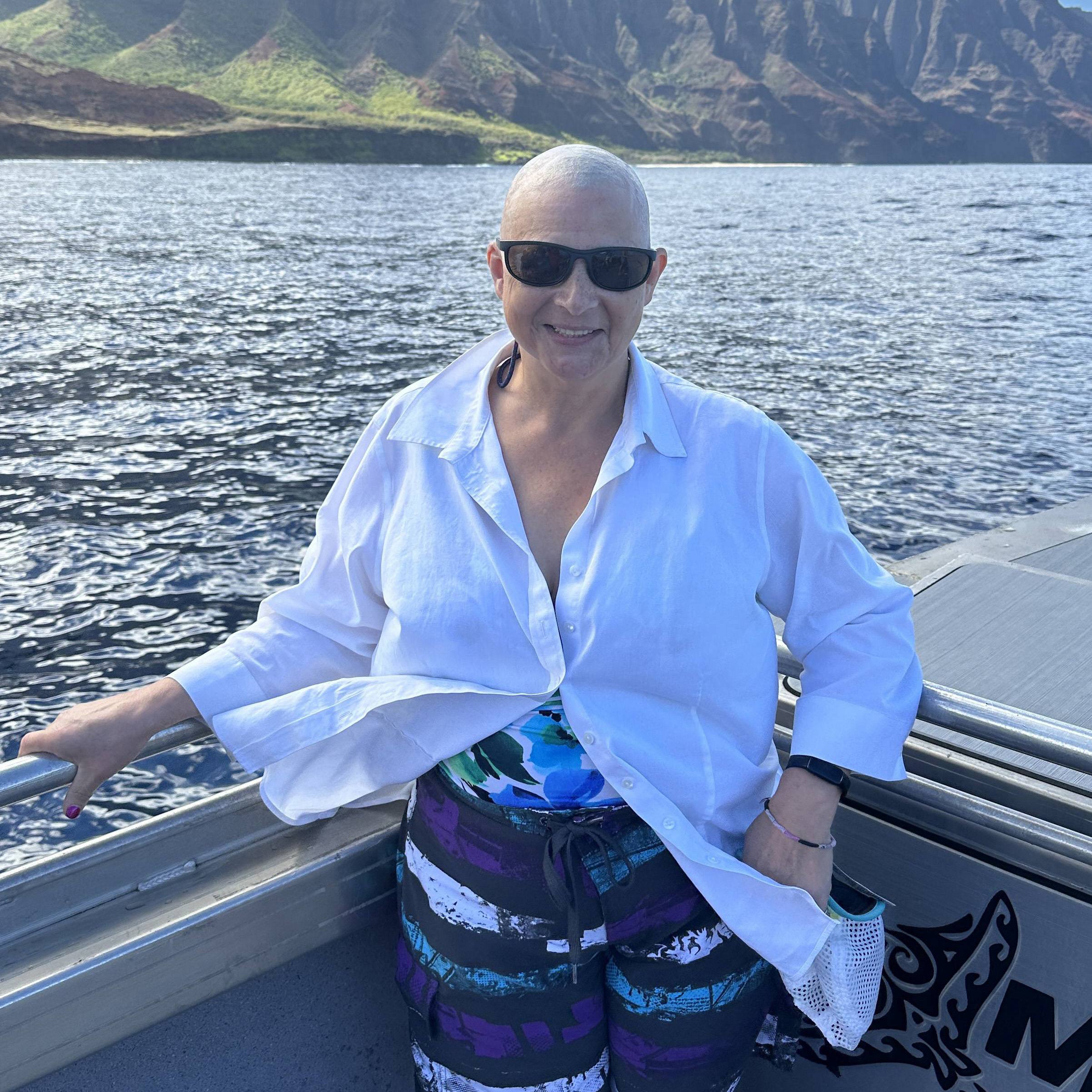As a talented wedding photographer, the pain of cervical stenosis with a herniated disc left Darrell Deutz, age 59, searching for solutions.
"I've photographed over a thousand weddings in my life," says Darrell, who owns his own studio based in Fargo, North Dakota. "A lot of photographers don't like the pressure. There is no second chance, so you have to be confident. You can't make any mistakes. I like the challenge."
In addition to his career as a photographer, Darrell has always enjoyed an active lifestyle, including daily runs and bike rides.
"I ran cross-country in high school. I've been an avid runner since and did bicycling for cross-training," Darrell says. "For my 50th birthday, I decided to go for a 50-mile bike ride."
On that day, approximately 10 years ago, Darrell had a cycling accident. For 25 minutes, he lay unconscious on the side of a highway just outside of Grand Forks, North Dakota. After a passerby discovered Darrell, he was rushed to the emergency room.
"I made it 35 miles but didn't get to the last 15," he says.
A determined and resilient Darrell left the accident with more than 70 stitches in his face. With no broken bones, he was back to shooting weddings the next week. As a result of the accident, however, five years later Darrell began dealing with severe neck pain from a deterioration of the spine.
Doctors discovered Darrell had a herniated disc, as well as bone spurs. In an effort to manage the pain, Darrell was forced to rely on pain medication in order to continue his work as a photographer. But that wasn't a long-term solution.
"It was affecting my work and my personality," Darrell says. "I knew I needed surgery."
Searching for answers
"I started researching," Darrell says. "I saw four different neurosurgeons and each provided different options. One recommended taking out three discs and doing a fusion, and another said surgery wasn't an option at all."
After receiving so many varying recommendations for treatment, Darrell began studying his condition on his own. In January 2016, he decided to travel to Mayo Clinic's Rochester campus for a second opinion from neurologist Rodolfo Savica, M.D., Ph.D., and neurologic surgeon Mohamad Bydon, M.D. Together they worked closely with Darrell to successfully manage his pain without surgery for several months.
"Resolving a patient's pain without surgery is always the top preference," Dr. Bydon says.
In follow-up appointments, Dr. Bydon noticed that the pain of cervical stenosis was affecting Darrell's ability to do his work.
"Mr. Deutz is an active and busy wedding photographer who is carrying heavy equipment and needs to be able to turn his neck with full range of motion. And so he understandably wanted to avoid fusion. At the same time, he had a large cervical disc herniation that was compressing his spinal cord and nerve roots," Dr. Bydon says. "It got to the point that Mr. Deutz was no longer able to photograph weddings and began turning down jobs due to his worsening condition. At that point, Mr. Deutz and I began to reconsider the options."
"Dr. Bydon is just really down-to-earth. He explained my options, and I felt very comfortable with him doing the surgery because of his experience with the new artificial disc technology." — Darrell Deutz
In his own research, Darrell discovered the benefits of cervical disc arthroplasty — a procedure where the disc is removed and replaced with an artificial disc. The procedure decompresses the spinal cord, preserves the natural movement of the neck, and reduces the risk for adjacent segment disease — a condition where the level of the spine above or below a spinal fusion degenerates rapidly and begins causing symptoms.
With Dr. Bydon's guidance, Darrell identified cervical disc arthroplasty as an attractive alternative to fusion because it helps retain natural neck movement while addressing cervical stenosis.
"Fusion changes the biomechanics above and below that level of the spine, sometimes resulting in adjacent segment disease," Dr. Bydon says. "Using the artificial disc preserves the natural range of the spine and, according to early data, can reduce the risk of adjacent segment disease."
Darrell felt comfortable and confident with Dr. Bydon, who specializes in minimally invasive spine surgery and the cervical disc arthroplasty procedure.
"I felt really good after talking to him. Dr. Bydon is just really down-to-earth," Darrell says. "He explained my options, and I felt very comfortable with him doing the surgery because of his experience with the new artificial disc technology."
A minimally invasive solution
In November 2016, after his wedding season had wrapped up for the year, Darrell decided to go ahead with the cervical disc arthroplasty.
"I would say that I was a little nervous going into surgery and everyone involved with my prep was totally amazing," Darrell says.
Dr. Bydon successfully performed the surgery and replaced Darrell's disc at C5-6. The minimally invasive procedure involved just a small incision in the front of the neck. The procedure preserved the muscles in the neck and natural motion of the spine, while reducing blood loss, the length of Darrell's hospital stay and the need for pain medication after surgery.
"Our main goal is to take care of the patient and provide them the best possible outcome. Mr. Deutz's surgery preserved his range of motion and allowed him to quickly return to his work as a photographer." — Mohamad Bydon, M.D.
Darrell was surprised that he didn't need a neck brace and was able to eat a steak just two days after surgery. He says Mayo Clinic lived up to its reputation for quality of care and experience for patients.
"Everybody is so friendly. And I hear that a lot. You hear it from other patients," he says. "But the main thing is that you get results."
Dr. Bydon is very pleased with Darrell's recovery and his ability to resume his passion.
"Our main goal is to take care of the patient and provide them the best possible outcome," Dr. Bydon says. "Mr. Deutz's surgery preserved his range of motion and allowed him to quickly return to his work as a photographer."
Back to photography
Three months after surgery, Darrell has reduced his reliance on pain medication and looks forward to more improvement over the next few years. He is back to his work as a photographer and began taking wedding reservations again, with more than 20 weddings booked already this year.
He credits the team at Mayo Clinic for his results and his ability to move forward.
"Mayo has such a reputation for having an amazing level of expertise," he says. "The people working here have done it. They have accomplished that."
Darrell has also been reengaging in the activities that were once limited due to his neck pain. He is spending more quality time with family and friends.
"I can feel that I'm starting to get my life back."
HELPFUL LINKS
- Read more about cervical stenosis.
- Learn about Mayo Clinic's Department of Neurosurgery.
- Explore Mayo Clinic's Rochester campus.
- Request an appointment.
Related Articles








